Table of contents
Dried figs ( Ficus carica) contain up to 60% of the fruit's own sugar, which is why they should be consumed with caution. They are often dried (heated) in convection ovens or under hot steam, which is something raw foodists should take into account.
Use in the kitchen
Dried figs are dried real figs and, due to their high sweetness, are also very good as a dessert. To refine pastries, cakes ( gingerbread) or other desserts, they can be chopped or pureed. The well-known fig bread is made from dried figs, almonds and spices. To make processing easier, dried figs can be soaked in water overnight before use.
Two or three chopped figs in your morning muesli add a pleasant sweetness. Dried figs spice up salads, soups or stews with a delicious southern touch. Dried figs in red cabbage, dip, spread or with walnuts and vegan cream cheese in a sauce for pasta add delicious accents to the everyday menu.
Fig jam or chutney made from dried fruit is a good way to make them last even longer. Dried figs are considered an energy bomb because they contain a lot of nutrients as well as a high carbohydrate content. Figs are usually eaten in moderation, but for athletes they are ideal as an energy boost. They can be processed into muesli bars or energy balls in portion sizes.
Homemade preparation
Fresh, fully ripe figs are also very easy to dry yourself. The best way is in a dehydrator or in the oven. After washing and dabbing dry, place the figs on a drying rack or the oven rack. Do not use a baking tray so that the air can circulate well. Baking paper is also out of place here. To shorten the drying time, you can also cut the figs into smaller pieces. A space of one centimeter between the fruits is sufficient.
It is recommended to dry the figs at a temperature of around 50 °C. Note that the temperature for a raw product should not exceed 42 °C. At 50 °C, the fruits are turned after around 5 hours. To achieve the desired consistency, they must remain in the oven for at least another 5 hours.
After 10 hours, it is best to check every hour whether the figs have the desired consistency. The surface should be leathery and there should be no liquid visible on the surface. 2 If you are using a dehydrator, read the description for the desired fruit.
In many countries where figs are grown, they are also dried in the sun. However, the temperature is difficult to control, as it depends not only on the sunlight but also on the subsoil.
Vegan recipe for energy balls with dried figs
Ingredients: 100 g dried figs (or dates), 100 g cashews (or healthier: macadamia nuts), 4 tbsp amaranth, 1 tbsp fresh lemon juice.
Preparation: Chop all ingredients in a blender or food processor until the mixture is sticky. There may still be some pieces left. Form the mixture into small balls with wet fingers and roll in sesame seeds, sunflower seeds, chia seeds or coconut flakes as desired. Before eating the energy balls, you should keep them in the fridge for a few hours.
Vegan recipe for fig bread
Ingredients: 140 ml maple syrup, 3 bananas (mashed), 425 ml dried figs (chopped), 1 tsp cinnamon (ground), 568 ml wheat flour, 2 tsp baking powder, ¼ tsp salt, 213 ml walnuts (crumbled), 170 ml vegetable oil (such as rapeseed oil); for the egg substitute 2 tbsp flaxseed flour, 6 tbsp water.
Preparation: For the egg substitute, mix the flaxseed flour with water and leave to stand for 5 minutes. Rehydrate the figs in boiling water for 10-15 minutes. Mix the flaxseed and water mixture with the maple syrup and oil until smooth. Add the mashed bananas, chopped figs and cinnamon. Then add the flour, baking powder and salt and mix gently. Mix in the walnuts and pour the dough into the prepared tin. Bake for 1 hour at 175 °C.
Vegan recipes with dried figs can be found under the note: " Recipes that have the most of this ingredient ".
| Not only vegans or vegetarians should read this: Vegans often eat unhealthily. Avoidable nutritional errors. |
Purchasing - Storage
Dried figs are available from major retailers such as Coop, Migros, Denner, Volg, Spar, Aldi, Lidl, Rewe, Edeka, Billa, Hofer etc. Look for unsweetened, organically produced and, if possible, unsulphured products. The fruit available in rolls is pressed using hot steam. Figs are often dried (heated) in convection ovens or under hot steam (>65 °C); raw foodists should bear this in mind. 8 To maintain raw food quality, you can dry them yourself at temperatures below 42 °C. Or you can go to an organic supermarket (such as Denn's Biomarkt, Alnatura) or your trusted organic store to get products that are as natural as possible. They will certainly also offer sun-dried or gently dried fruit. Dried figs are available all year round.
Sulfur-free, organically produced figs are washed only with salt water and shock freezing is suitable for commercial use to kill pests. UV light is used to prevent the formation of mold so that fungicides do not have to be used. A white film often forms on the dried fig. This is not mold, however, but rather leaked fructose. 1
It is often difficult to detect signs of worms in dried figs. Former inhabitants often show up with dark brown spots that are also quite dry compared to the rest of the light and sticky flesh. Most people are not bothered by this, however. At least in southern countries, compact products containing figs are available for purchase. It is therefore more worthwhile to look out for active infestation (by small beetles or worms).
The availability of dried figs varies depending on the size of the store, catchment area, etc. Our recorded food prices for the DA-CH countries can be found above under the ingredient image - and by clicking you can see their development at various suppliers.
Storage tips
If the figs are sufficiently dried, they will last for about a year. To do this, you need to store them in a place that is as airtight and cool as possible. Ideally in a jar with a lid, in the cellar, pantry or even in the refrigerator. 17
Ingredients - Nutritional value - Calories
Dried figs have a water content of around 30%, which is a fairly high energy content of 249 kcal/100g. Fat is almost non-existent at 0.93 g and the protein content is also only 3.3 g/100g. The carbohydrate content is quite high at 64 g/100g, of which 48 g are sugar, which is about half the daily requirement. Thefiber content is 9.8 g/100g. 3
But the mineral and trace element content is also concentrated in dried fruit. Dried figs contain biotin (ex vitamin B7) at 18 µg/100g. This water-soluble vitamin is important for the breakdown of many amino acids and also plays a central role in the modification of histones in the cell nucleus. Pistachios and banana powder have similar values. Dried porcini mushrooms have much higher values at 94 and brewer's yeast at 115 µg/100g. 3
Dried figs also have a high potassium content. With 680 mg, 100 g cover about a third of the daily requirement. This macronutrient is important for the membrane potential in the cells. Dates and hazelnuts have a similar amount of potassium per 100 g. Dried spices such as coriander leaves have a multiple of this macronutrient at 4466 mg/100 g. 3
Manganese is also well represented in dried figs at 0.51 mg/100g, comparable to carob powder and rice noodles. This trace element is very important for the development of cartilage tissue and is found in very high quantities in cloves (60 mg/100g) and ground ginger (33 mg/100g). 3
The complete ingredients of dried figs, the coverage of the daily requirement and comparison values with other ingredients can be found in our nutrient tables. In the article Nutrients explained you will get a detailed insight into the topic.
Effects on health
How healthy are dried figs? The easily digestible dried fruits keep the digestive system healthy with their high fiber content when consumed regularly. Their laxative and diuretic effect helps with constipation. Similar to dried plums (damsons), dried figs should also be soaked beforehand to achieve this effect. 4
The tonic effect of figs also helps with fatigue caused by organic or psychological factors. Figs are also recommended for anemia. The nutritious dried fig is particularly recommended for pregnant women, nursing mothers, athletes and mentally challenged people (pupils and students). 4
Secondary plant substances
Many of the health benefits of dried figs can be attributed to the secondary plant substances they contain. Our article on secondary plant substances provides an overview of the classification of substance groups, their occurrence in foods and possible effects on humans. Figs ( real and dried) contain the following secondary plant substances, among others: 23,24
- Isoprenoids : carotenoids (β-carotene, zeaxanthin, β-cryptoxanthin, lutein)
- Polyphenols : flavonoids (flavones, flavanones, flavanonols), phenolic acids, anthocyanins
However, it should be noted that the composition of secondary plant substances in figs can vary depending on location, variety, time of harvest, degree of ripeness and processing. 23 Therefore, quantities are only of limited use and should only be understood roughly.
The antioxidants contained in these dried fruits fight free radicals and the potassium they contain helps to keep blood pressure stable. 23
Dangers - Intolerances - Side effects
Some sensitive people react to sulphurized dried fruit with headaches or nausea. Some asthmatics even get asthma attacks. In rare cases, pseudo-allergies occur. This sulphur is harmless for healthy people. However, since it is only used to make the fruit look nicer (prevents it from darkening), one should avoid eating sulphurized fruit. 5
The residual moisture contained in the fruit can cause mold to form, and the black mold that grows inside the fruit is particularly difficult to combat biologically. In this case, the fig must be opened and visually inspected before consumption. Aflatoxins or mycotoxins (mold metabolites) are often found in dried fruit. Chronic consumption of these toxins can be carcinogenic and mutagenic and can damage the liver and kidneys. 6,7 Aflatoxins cannot be destroyed by heating. 7
Folk medicine - natural medicine
In folk medicine, the bark, leaves, roots and milky sap of the fig are used to treat a variety of ailments. The fig milk that comes out of the broken leaves is used to treat skin problems, such as removing warts. Consumed as a tea, fig leaves have antidiabetic properties. 8, 9
Another area of application is bronchial diseases: Figs are effective against infections in general, but especially when dried and soaked. They clear the chest, relieve coughing, make expectoration easier and soothe the airways. Chronic bronchitis, but also acute respiratory infections caused by flu and colds, are often treated with figs soaked in milk (including plant-based milk) and cooked. 4
Ecological footprint - animal welfare
The ecological footprint of a food depends on various factors. The type of agricultural production (conventional vs. organic), seasonal, regional or domestic production or import by truck, ship or plane, different types of packaging and whether the goods are fresh or frozen all play a decisive role. 11
According to CarbonCloud, figs from China have a CO 2 footprint of 1.17 kg CO 2 eq/kg (mainly production). Dried figs from China have a CO 2 footprint of 8.43 kg CO 2 eq/kg (including production, transport and processing). 12 This clearly shows how much impact food processing and transport can have.
For comparison, vegetables, one of the most climate-friendly foods, have a carbon footprint of around 0.1-0.5 kg CO 2 eq/kg depending on the cultivation method (and excluding the impact of transport). 15 The average carbon footprint of plant-based foods is around 0.66 kg CO 2 eq/kg, which is only 10.7% of the CO 2 emissions of animal products (6.15 kg CO 2 eq/kg). 14 To keep the carbon footprint small, it is best to eliminate animal products from your diet.
Despite extensive research, we unfortunately do not have any concrete figures on the water footprint of dried figs. The water footprint of real figs is a total of 3350 l/kg. 13
In general, fresh, unpackaged, seasonal and regional vegetables have the lowest emissions. The more a food is processed, the worse its ecological footprint. This is why dried figs tend to have a worse CO2 balance.
For detailed explanations of various sustainability indicators (such as ecological footprint, CO2 footprint, water footprint), see our article: What does the ecological footprint mean?
Worldwide occurrence - cultivation
The cultivation of fig trees is probably older than agriculture. The common fig comes from the Middle East, not from Egypt like other species (ascot fig: Ficus sycomorus). Remains of a wild form of fig dating back 11,400 years were found in Jericho (west bank of the Jordan). In 5000 BC, the Assyrians also cultivated fig trees in their gardens. 16 Wild figs are widespread throughout the Middle East and the Mediterranean region. The majority of figs are still harvested there today. Most figs imported into Europe today come from Greece and Turkey. The rest from Italy and Spain. Smaller harvests come from Africa, China, California, Australia, New Zealand and Mexico. 16,18
Cultivation - Harvest
Depending on the variety, soil and rainfall, between 80 and 1200 trees are planted per hectare. Without pruning, the fig trees can reach a height of around 10 m. Hardly any nitrogen is used for fertilizer and care is easy. The soil requirements are very low. The common fig can also be found in areas with very little rainfall. It is sensitive to waterlogging. Winters must not be too cold. As soon as the buds are open, the fig tree cannot tolerate bare frosts or late frosts. The fig tree grows very slowly and begins to bear fruit after seven years. A tree can bear up to 40 kg of fruit and produce this yield for half a century. 10 Read more about the special pollination process of the common fig.
Organic fig farming differs only slightly from conventional farming, but the processing differs. Conventional dried figs are often treated with chemicals (to control pests) and sulphur after exposure to the sun. 8 Organic farming does not use this. In fig orchards for the production of dried fruit, the trees are usually planted 6 to 12 metres apart. This is done because of the different pruning techniques required to achieve an adequate annual yield. For dried fig production, watering is reduced a few weeks before ripening. The figs are collected as soon as they have fallen to the ground in the orchard. 18
Industrial production
Pretreatments such as blanching or sulphurisation accelerate drying, control browning, improve texture and reduce pest infestation. 25
There are various drying methods besides the traditional one directly in the sun, which takes about 3-5 days. 25
Solar drying uses basically the same method as sun drying, but it takes place behind plastic or glass, making it more energy efficient. Mechanical dehydration uses airflow tunnels that remove water from the fruit using variable airflow and temperature. Osmotic dehydration is even more energy efficient, where the figs are impregnated with a hypertonic solution, allowing water to be removed at lower temperatures. 25
Further information
The common fig ( Ficus carica var. domestica) belongs to the mulberry family (Moraceae). Figs are rarely sold under the variety name, but are more likely to be labelled according to their origin. The Smyrna variety comes from Turkey, Bari figs from Italy, Fraga figs from Spain, Kalamata figs from Greece and Bougie figs from Algeria.
The fig tree is the only representative of the Ficus in Europe. There are around 1,000 species of the Ficus species worldwide. The mightiest tree is in Calcutta ( Ficus bengalensis) and has a crown circumference of 300 m. Wild forms of the fig can be found in the eastern Mediterranean as far as the Crimea and Transcaucasia. 10
In literature, the fig tree has been mentioned in a positive way in various countries and religions for thousands of years. In the Bible and in Christianity, it is mentioned for peace, prosperity, blessing, wealth and fertility. 16, 20 In India, it is considered holy. 22 On the other hand, there are also negative uses of the fig: connections with the tree of the knowledge of good and evil and the curse. 20,21
Alternative names
Common names in German for trees or fruits are Feygen, Fichboum, Ficheffele, Figa, Fig, Figenbaum, Figenbaym, Figenom, Figenboum, Figenpawm, Fygen, Smakka, Smakkabagms, Veigenpoum, Veyg, Vichboum, Vick, Vyck, Vig, Vige, Vigbom, Vigenbom, Vigboum, Vighen, Vyghen, Wighen and Wyk. 19
In English, dried figs are called dried figs.
Bibliography - 25 Sources
| 1. | Pini U. Das Bio-Food Handbuch. Ullman: Hamburg, Potsdam. 2014. |
| 2. | Richtig-dörren de: Getrocknete Feigen selber machen. |
| 3. | USDA United States Department of Agriculture. |
| 4. | Roger JDP. Heilkräfte der Nahrung: ein Praxishandbuch. Zürich: Advent-Verlag. 2006. |
| 5. | 1001frucht de: Der Unterschied zwischen geschwefelten und ungeschwefelten Trockenfrüchten. |
| 6. | Kantonales Labor Basel Land. Trockenfrüchte. Quartalsbericht 2004. |
| 7. | Bundesinstitut für Risikobewertung. Fragen und Antworten zu Aflatoxinen in Lebensmitteln und Futtermitteln. 2013. |
| 8. | Mat Desa WN, Mohammad M, Fudholi A. Review of drying technology of fig. Trends in Food Science & Technology. 2019;88:93–103. |
| 9. | Healthy and Natural World. Scientifically Proven Health Benefits of Figs (Fruit, Leaves, Dried or Fresh). 2022. |
| 10. | Brücher H. Tropische Nutzpflanzen. Ursprung, Evolution und Domestikation. Springer-Verlag: Berlin Heidelberg New York. 1977. |
| 11. | Reinhardt G, Gärtner S, Wagner T. Ökologische Fussabdrücke von Lebensmitteln und Gerichten in Deutschland. Institut für Energie- und Umweltforschung Heidelberg ifeu. 2020:1-22. |
| 12. | Carboncloud. Dried Figs, China. 2024. |
| 13. | Mekonnen MM, Hoekstra AY. The green, blue and grey water footprint of crops and derived crop products. Hydrol Earth Syst Sci. 2011;15(5):1577–1600. |
| 14. | Feng S, Lakshmanan P et al. A comprehensive continental-scale analysis of carbon footprint of food production: Comparing continents around the world. Journal of Cleaner Production. 2023;426:138939. |
| 15. | Pereira B de J, Cecílio Filho AB, La Scala N. Greenhouse gas emissions and carbon footprint of cucumber, tomato and lettuce production using two cropping systems. Journal of Cleaner Production. 2021;282:124517. |
| 16. | Bio Feigenhof. Feigenplantage. |
| 17. | FigNut. How to Store Dried Figs. |
| 18. | Stover E, Aradhya M, Ferguson L, Crisosto CH. The fig: overview of an ancient fruit. HortScience. 2007;42(5):1083–1087. |
| 19. | Pritzel GA, Jessen C. (1882). Die deutschen Volksnamen der Pflanzen. Neuer Beitrag zum deutschen Sprachschatze. Philipp Cohen: Hannover. |
| 20. | Goor A. The history of the fig in the holy land from ancient times to the present day. Econ Bot. 1965;19(2):124–135. |
| 21. | Janick J. Fruits of the bibles. HortScience. 2007;42(5):1072–1076. |
| 22. | PBS. Fig Trees: From the Sacred to the Strangler. 2008. |
| 23. | Sandhu AK, Islam M et al. Phytochemical composition and health benefits of figs (Fresh and dried): a review of literature from 2000 to 2022. Nutrients. 2023;15(11):2623. |
| 24. | Solomon A, Golubowicz S et al. Antioxidant activities and anthocyanin content of fresh fruits of common fig (Ficus carica l.). J Agric Food Chem. 2006;54(20):7717–7723. |
| 25. | Durgam S, Sripathi V. Different Drying Methods for Fig. Research Trends in Horticulture Sciences. 2019;63-69. |

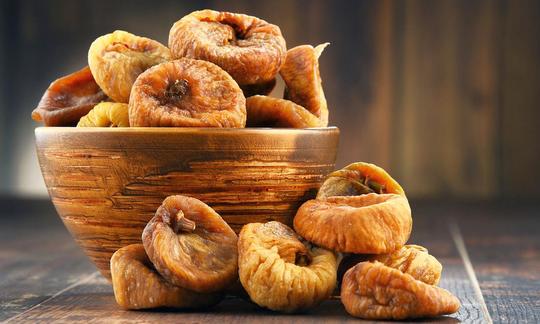

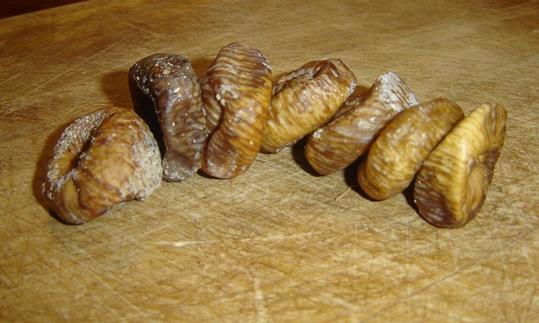

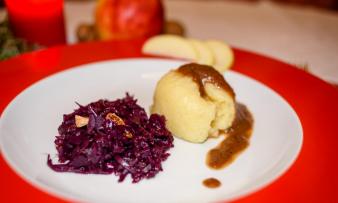
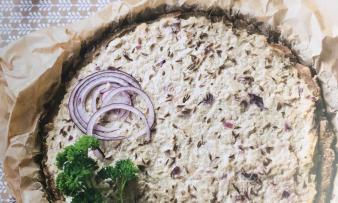
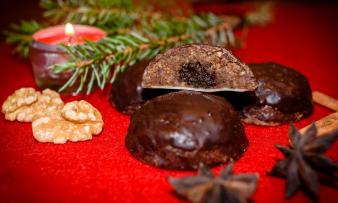





Comments